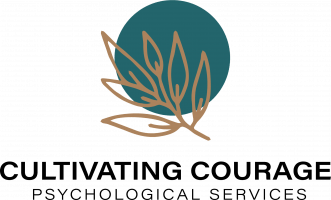Drs. Emily and Amelia Nagowski explore the topic of how to manage burnout in their book, Burnout: The Secret to Unlocking the Stress Cycle. Before jumping into ways that we can address burnout, let’s take a moment to better understand what burnout is.
First, let’s look at the definitions of burnout.
Burnout (n.):
One, is the reduction of fuel or substance through use or combustion.
Two, the failure of an electrical device or component through overheating.
Three, physical or mental collapse caused by overwork or stress.
While we are focusing on definition number three, we can learn important lessons from the first two definitions. Notice an important relationship between the three: overuse, overheating, and overwork.
Most of us know the feeling of being burnt out, even if we have not always been able to put a name to it. Importantly, burnout comes from feeling stressed, again and again, without completing the emotional response cycle. What’s more, stress can come at us from all different directions these days: careers, relationships, finances, sleep, scheduling…the list can go on!
How can I tell if I am burned out?
One symptom is emotional exhaustion. Briefly, emotional exhaustion or fatigue comes from caring too much for too long without replenishing your reserves. Another symptom is depersonalization, meaning the depletion of empathy, caring, and compassion for those around you. Lastly, you can recognize it by a decreased sense of accomplishment. This is when you are feeling futile or that nothing you do makes a difference.
How can I manage burnout?
Now, focus on managing burnout, completing your stress response cycles, and restoring your reserves.
Drs. Nagowski have identified that there is more than one way to complete the emotion response cycle. Notice how they help to complete stress cycles and look at examples of how to engage with each one. Then, write a list of your favorites. Also, don’t forget to add your own examples!
Moving Your Body tells your body that you have successfully survived a threat.
Examples of moving your body include having a spontaneous dance party, going for a walk, or enjoying some yoga.
Sleeping is needed to help us maintain all of our operating systems.
Examples of helping you to work through stress cycles through sleep are prioritizing sleep, setting a set bedtime, making time for a nap, or buying a more comfortable mattress to sleep on.
Breathing or more specifically deep slow breaths, helps you to down-regulate your stress response.
Examples of breathing exercises include focusing on your breath, progressive muscle relaxation, or other grounding exercises.
Positive Social Interaction signals that the world is a safe place.
Examples of positive social interaction are calling your close friend for a chat, grabbing a coffee with a relative, or planning a fun getaway with your partner.
Laughter increases relationship satisfaction
Examples of inviting laughter include watching a comedy, sharing your favorite pun with a friend, or telling a funny story.
Affection helps us to deepen our connections which can help us to shed stress.
Examples of affectionate gestures include hugging someone for 20 seconds (there is science behind this!), cuddling with a partner, or holding hands with a friend.
Crying helps to guide you through the emotional cycle (let it out!)
Examples of crying include — well, crying!
Creative Expression leads to more energy, excitement, and enthusiasm for tomorrow.
Examples of creative expression include sketching on a blank piece of paper, making something, or crafting.
Engaging your Imagination helps to signal that you are safe enough to explore.
Examples of engaging your imagination include reading or writing a short story.
Additionally, learn more by listening to their podcast with Dr. Brené Brown on Unlocking Us.
Visit our homepage at: www.couragepsych.com
Nagoski, E., & Nagoski, A. (2019). Burnout: the secret to unlocking the stress cycle. First edition. New York, Ballantine Books.




Pingback: Taking breaks - Cultivating Courage - Online Therapy in Scarsdale, NY
Pingback: I Highly Recommend This Book - Cultivating Courage- Online therapist in Scarsdale